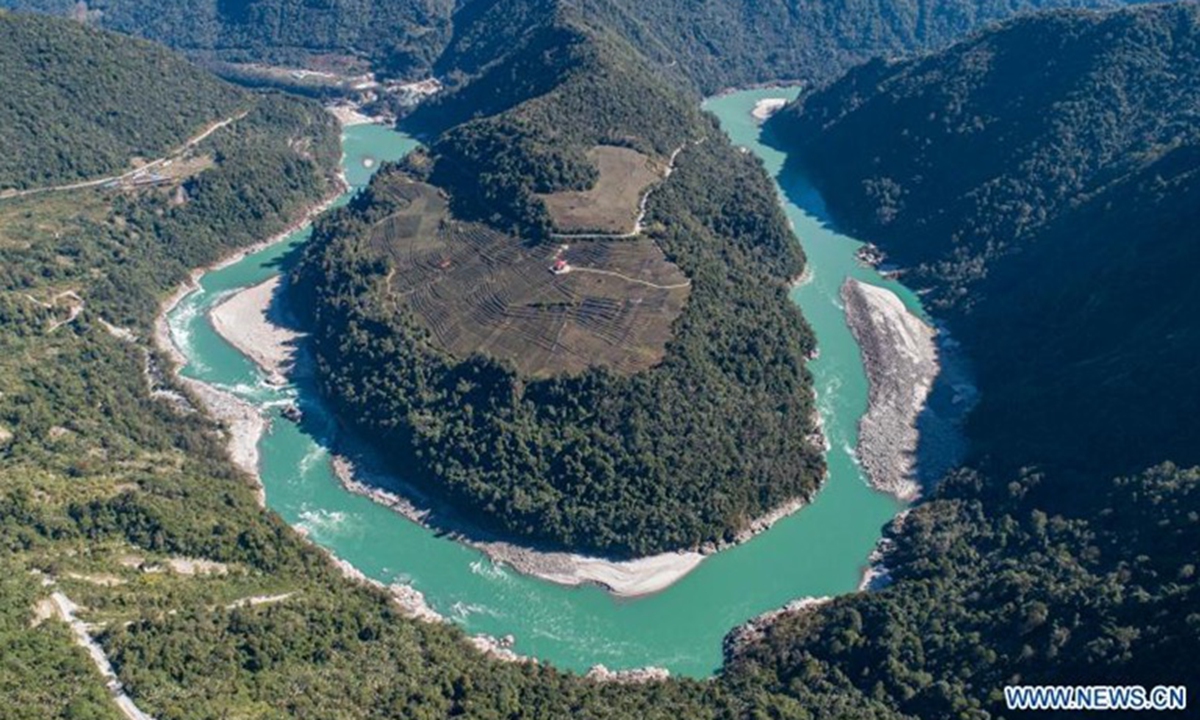
Photo: Xinhua
The planned Yarlung Zangbo River hydropower project in Southwest China's Tibet Autonomous Region may have been further guaranteed as it is mentioned in the national development blueprint for the next five years and beyond.
Construction of key projects should be promoted, such as the Sichuan-Tibet Railway and hydropower development on the Yarlung Zangbo River, according to the 14th Five-Year Plan (2021-25) for National Economic and Social Development and the Long-Range Objectives Through the Year 2035, which was adopted by China's top legislature on Thursday and published in full on Saturday.
A source close to the design of the project told the Global Times that technically, China is capable of realizing this grand project, but the project will not be completed within the 14th Five-Year Plan period.
Moreover, the project will be a sequence of power plant sets and will call for cooperation from different sides, according to the source.
Media reported that Qi Zhala, chairman of the Tibet Autonomous Region and deputy to the 13th National People's Congress, urged acceleration of the project and "comprehensive planning and environmental impact assessments" for the project during the two sessions.
The delegation group of Tibet for the just concluded national two sessions confirmed with the Global Times about Qi Zhala's address.
Qi Zhala had visited and inspected the site selected for the Yarlung Zangbo River hydropower project in November 2020 and listened to reports of the planning during his visit to Medog county, where the Yarlung Zangbo Grand Canyon is located, Tibet Daily reported.
The Yarlung Zangbo River is one of the major waters in Asia and also passes through India and Bangladesh.
Yan Zhiyong, chairman of the Power Construction Corp of China, or POWERCHINA, revealed in a November meeting that the harnessing of the over 60 million kilowatts of hydropower downstream the Yarlung Zangbo River could provide 300 billion kilowatt-hours (kWh) of clean, renewable, and zero-carbon electricity annually.
An article on the POWERCHINA website in February explained that engineers had been conducting site investigation at the Yarlung Zangbo Grand Canyon.
The Yarlung Zangbo River's mainstream has the richest water resources in Southwest China's Tibet Autonomous Region, about 80 million kilowatts, while the 50-kilometer section of the Yarlung Zangbo Grand Canyon has 70 million kilowatts that could be used, which equals to more than three Three Gorges power stations, according to a November article on the Central Committee of the Communist Youth League of China's WeChat account.




